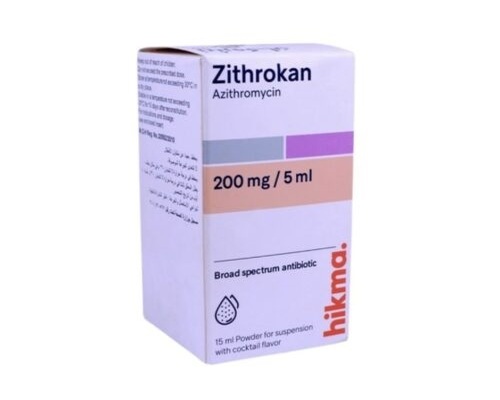Description
Trade name:
Clavimox
Composition:
Each tablet contains:
Amoxicillin 875 mg
Clavulanic acid 125 mg
Excipients:
colloidal silicon dioxide, crospovidone, sodium croscarmellose, magnesium stearate, microcrystalline cellulose.
Film shell composition: hypromellose, ethylcellulose, polysorbate 80, triethyl citrate, titanium dioxide, talc.
Properties:
Broad-spectrum antibiotic. A combination drug of amoxicillin and clavulanic acid – a beta-lactamase inhibitor. It has a bactericidal effect, inhibits the synthesis of the bacterial wall.
Active against aerobic gram-positive bacteria (including strains producing beta-lactamases): Staphylococcus aureus; aerobic gram-negative bacteria: Enterobacter spp., Escherichia coli, Haemophilus influenzae, Klebsiella spp., Moraxella catarrhalis. The following pathogens are sensitive only in vitro: Staphylococcus epidermidis, Streptococcus pyogenes, Streptococcus anthracis, Streptococcus pneumoniae, Streptococcus viridans, Enterococcus faecalis, Corynebacterium spp., Listeria monocytogenes; anaerobic Clostridium spp., Peptococcus spp., Peptostreptococcus spp.; as well as aerobic gram-negative bacteria (including strains producing beta-lactamases): Proteus mirabilis, Proteus vulgaris, Salmonella spp., Shigella spp. , Bordetella pertussis, Yersinia enterocolitica, Gardnerella vaginalis, Neisseria meningitidis, Neisseria gonorrhoeae, Haemophilus ducreyi, Yersinia multocida (formerly Pasteurella), Campylobacter jejuni; anaerobic gram-negative bacteria (including strains producing beta-lactamases): Bacteroides spp., including Bacteroides fragilis.
Clavulanic acid inhibits types II, III, IV and V beta-lactamases, is not active against type I beta-lactamases produced by Pseudomonas aeruginosa, Serratia spp., Acinetobacter spp. Clavulanic acid has a high affinity for penicillinases, due to which it forms a stable complex with the enzyme, which prevents enzymatic degradation of amoxicillin under the influence of beta-lactamases.
Indications:
Treatment of infectious and inflammatory diseases caused by sensitive pathogens: lower respiratory tract infections (bronchitis, pneumonia, pleural empyema, lung abscess); ENT infections (sinusitis, tonsillitis, otitis media); genitourinary and pelvic infections (pyelonephritis, pyelitis, cystitis, urethritis, prostatitis, cervicitis, salpingitis, salpingo-oophoritis, tubo-ovarian abscess, endometritis, bacterial vaginitis, septic abortion, postpartum sepsis, pelvic peritonitis, chancroid, gonorrhea); skin and soft tissue infections (erysipelas, impetigo, secondarily infected dermatoses, abscess, phlegmon, wound infection); osteomyelitis; postoperative infections.
Prevention of infections in surgery.
Method of administration and dosage:
Adults and children over 12 years of age or weighing 40 kg or more: 500 mg 2 times a day or 250 mg 3 times a day. For severe infections and respiratory tract infections – 875 mg 2 times a day or 500 mg 3 times a day.
The maximum daily dose of amoxicillin for adults and children over 12 years of age is 6 g, for children under 12 years – 45 mg / kg of body weight.
The maximum daily dose of clavulanic acid for adults and children over 12 years of age is 600 mg, for children under 12 years – 10 mg / kg of body weight.
Duration of treatment – up to 14 days, acute otitis media – up to 10 days.
Contraindications:
Hypersensitivity to the components of the drug (including cephalosporins and other beta-lactam antibiotics); infectious mononucleosis (including when measles-like rash appears); phenylketonuria; episodes of jaundice or liver dysfunction due to the use of amoxicillin/clavulanic acid in the anamnesis; CC less than 30 ml/min (for tablets 875 mg/125 mg).
With caution:
Pregnancy, lactation, severe liver failure, gastrointestinal diseases (including a history of colitis associated with the use of penicillins), chronic renal failure.
Precautions:
During a course of treatment, it is necessary to monitor the function of the hematopoietic organs, liver and kidneys.
In order to reduce the risk of side effects from the gastrointestinal tract, the drug should be taken during meals.
Superinfection may develop due to the growth of microflora insensitive to it, which requires an appropriate change in antibacterial therapy.
May give false positive results when determining glucose in urine. In this case, it is recommended to use the glucose oxidant method for determining the concentration of glucose in urine.
In patients with increased sensitivity to penicillins, cross-allergic reactions with cephalosporin antibiotics are possible.
Side effects:
From the digestive system: nausea, vomiting, diarrhea, gastritis, stomatitis, glossitis, increased activity of liver transaminases, in isolated cases – cholestatic jaundice, hepatitis, liver failure (more often in the elderly, men, with long-term therapy), pseudomembranous and hemorrhagic colitis (may also develop after therapy), enterocolitis, black “hairy” tongue, darkening of tooth enamel.
From the hematopoietic organs: reversible increase in prothrombin time and bleeding time, thrombocytopenia, thrombocytosis, eosinophilia, leukopenia, agranulocytosis, hemolytic anemia.
From the nervous system: dizziness, headache, hyperactivity, anxiety, behavioral changes, convulsions.
Local reactions: in isolated cases – phlebitis at the site of intravenous administration.
Allergic reactions: urticaria, erythematous rash, rarely – erythema multiforme exudative, anaphylactic shock, angioedema, very rarely – exfoliative dermatitis, malignant exudative erythema (Stevens-Johnson syndrome), allergic vasculitis, serum sickness-like syndrome, acute generalized exanthematous pustulosis.
Others: candidiasis, development of superinfection, interstitial nephritis, crystalluria, hematuria.
Storage method:
Store at a temperature not exceeding 25 degrees.
Packaging:
A cardboard box contains 3 blisters of 4 tablets, paper instructions.









